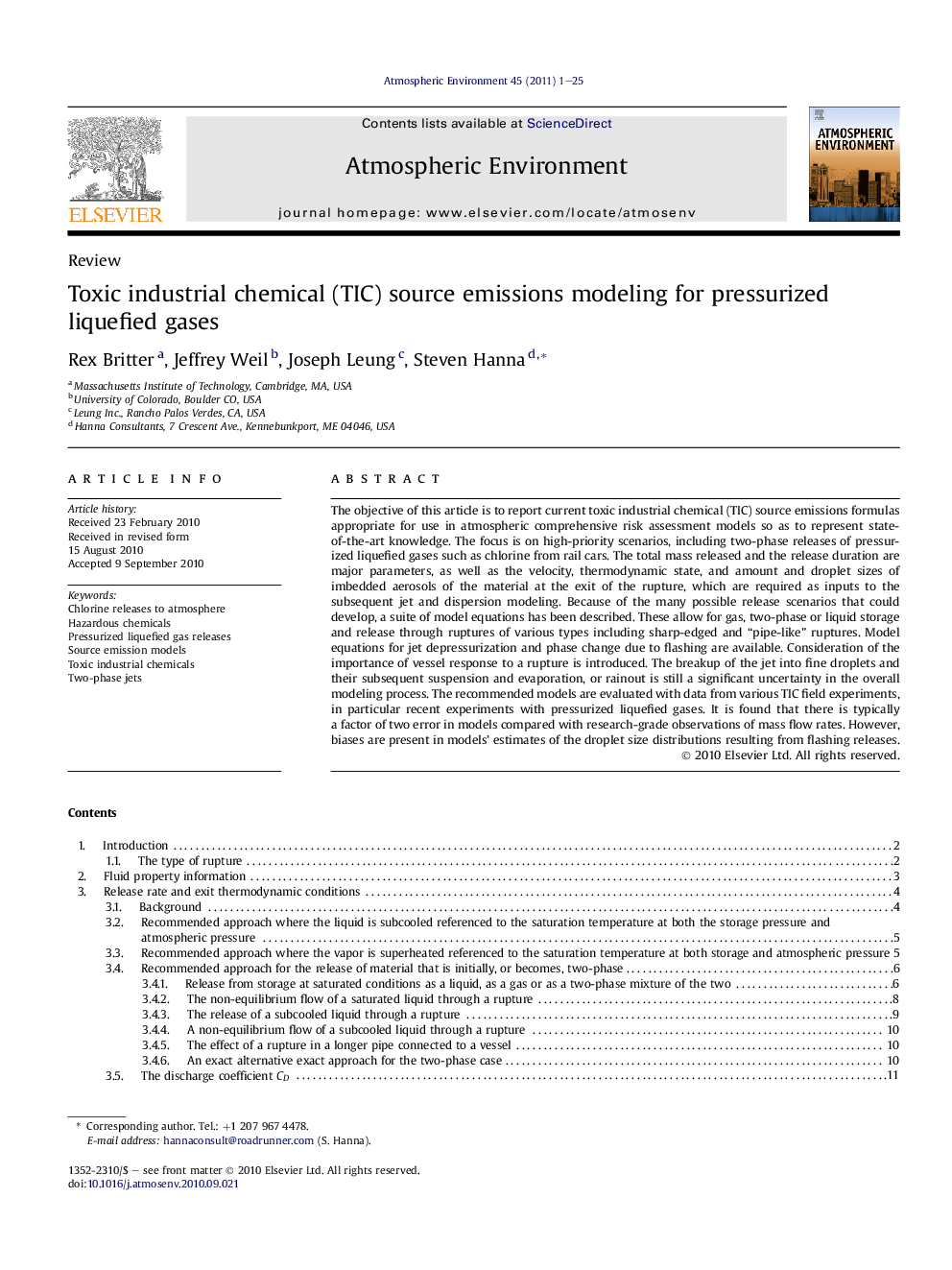| Article ID | Journal | Published Year | Pages | File Type |
|---|---|---|---|---|
| 4440333 | Atmospheric Environment | 2011 | 25 Pages |
Abstract
The objective of this article is to report current toxic industrial chemical (TIC) source emissions formulas appropriate for use in atmospheric comprehensive risk assessment models so as to represent state-of-the-art knowledge. The focus is on high-priority scenarios, including two-phase releases of pressurized liquefied gases such as chlorine from rail cars. The total mass released and the release duration are major parameters, as well as the velocity, thermodynamic state, and amount and droplet sizes of imbedded aerosols of the material at the exit of the rupture, which are required as inputs to the subsequent jet and dispersion modeling. Because of the many possible release scenarios that could develop, a suite of model equations has been described. These allow for gas, two-phase or liquid storage and release through ruptures of various types including sharp-edged and “pipe-like” ruptures. Model equations for jet depressurization and phase change due to flashing are available. Consideration of the importance of vessel response to a rupture is introduced. The breakup of the jet into fine droplets and their subsequent suspension and evaporation, or rainout is still a significant uncertainty in the overall modeling process. The recommended models are evaluated with data from various TIC field experiments, in particular recent experiments with pressurized liquefied gases. It is found that there is typically a factor of two error in models compared with research-grade observations of mass flow rates. However, biases are present in models' estimates of the droplet size distributions resulting from flashing releases.
Related Topics
Physical Sciences and Engineering
Earth and Planetary Sciences
Atmospheric Science
Authors
Rex Britter, Jeffrey Weil, Joseph Leung, Steven Hanna,
